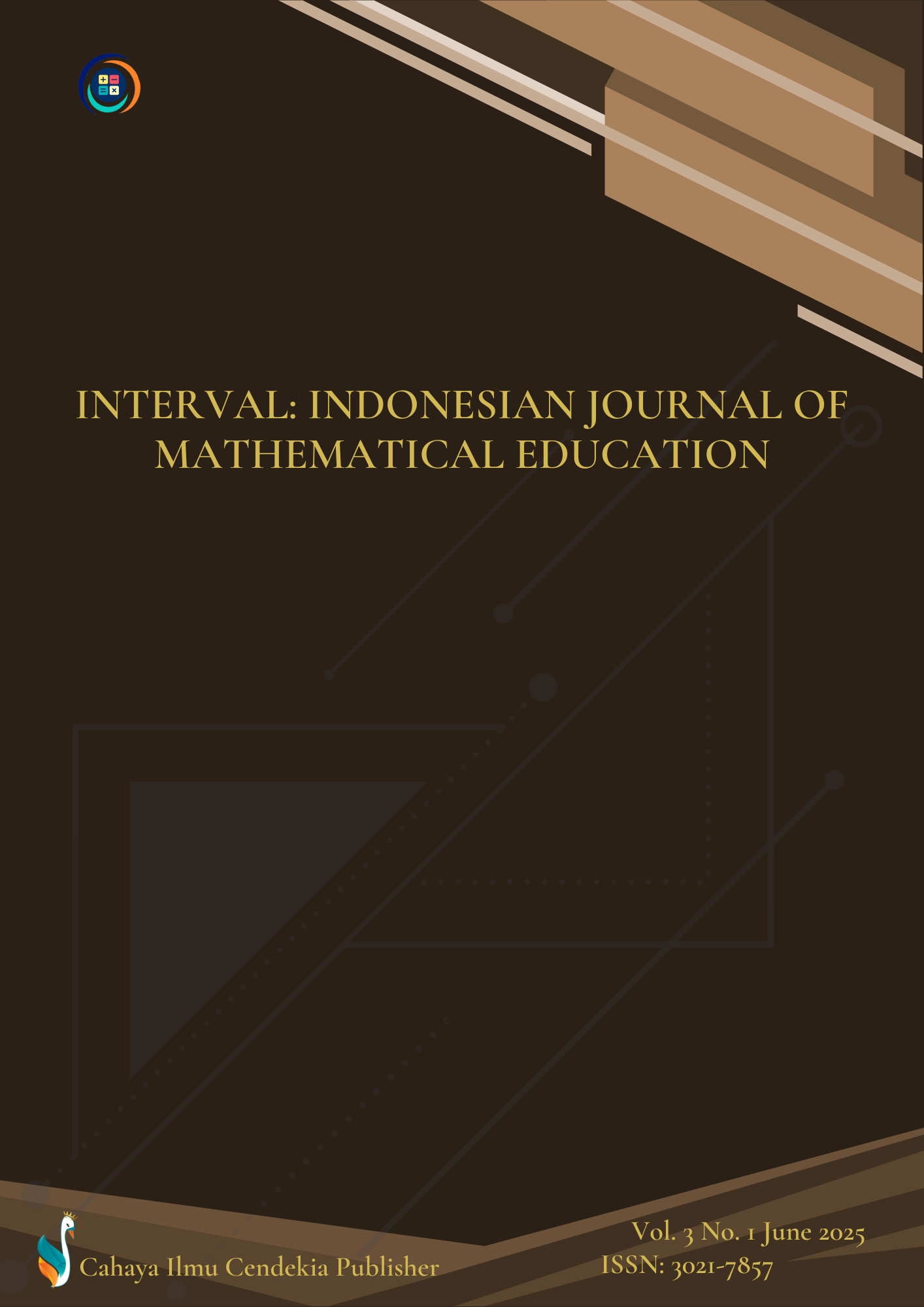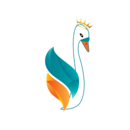Critical Thinking as a Key to Solving Mathematical Problems: Findings from the TIMSS Framework in Middle Schools
Abstract
Purpose of the study: The purpose of this study was to analyze the influence of critical thinking skills on students' mathematical problem solving based on the TIMSS framework.
Methodology: This study uses a quantitative approach with a correlational survey design. The population of the study was junior high school students with a sample of 200 students selected by random sampling. Data collection used the Critical Thinking Ability Test and the Mathematics Problem Solving Test based on TIMSS. Data analysis was carried out using descriptive statistics, Pearson correlation tests, and simple linear regression using SPSS. Validity tests used content and construction tests, and reliability was tested with Cronbach's Alpha (0.745).
Main Findings: The results of this study indicate a significant positive relationship between students' critical thinking skills and mathematical problem solving. The average score of critical thinking skills and mathematical problem solving is in the moderate category. The evaluation indicator has the highest score, while inference and synthesis have the lowest scores. The results of the Pearson correlation test showed a moderate relationship (r = 0.550), and the simple linear regression test showed that critical thinking skills significantly affect mathematical problem solving (R² = 0.303, p < 0.05).
Novelty/Originality of this study: This study offers a fresh perspective by examining students’ critical thinking skills within the context of mathematical problem-solving using the TIMSS framework. The results enhance existing literature by demonstrating a strong link between critical thinking and effective problem-solving.
References
É. Fülöp, “Developing Problem-Solving Abilities by Learning Problem-Solving Strategies: An Exploration of Teaching Intervention in Authentic Mathematics Classes,” Scand. J. Educ. Res., vol. 65, no. 7, pp. 1309–1326, Nov. 2021, doi: 10.1080/00313831.2020.1869070.
A. Schulz, “Assessing student teachers’ procedural fluency and strategic competence in operating and mathematizing with natural and rational numbers,” J. Math. Teach. Educ., vol. 27, no. 6, pp. 981–1008, 2023, doi: 10.1007/s10857-023-09590-7.
I. V. Lovianova, R. Yu Kaluhin, D. A. Kovalenko, O. G. Rovenska, and A. V. Krasnoshchok, “Development of logical thinking of high school students through a problem-based approach to teaching mathematics,” J. Phys. Conf. Ser., vol. 2288, no. 1, 2022, doi: 10.1088/1742-6596/2288/1/012021.
S. Suherman and T. Vidákovich, “Assessment of mathematical creative thinking: A systematic review,” Think. Ski. Creat., vol. 44, no. February, 2022, doi: 10.1016/j.tsc.2022.101019.
J. Su and W. Yang, “A systematic review of integrating computational thinking in early childhood education,” Comput. Educ. Open, vol. 4, no. January, p. 100122, 2023, doi: 10.1016/j.caeo.2023.100122.
Y.-P. Cheng, C.-F. Lai, Y.-T. Chen, W.-S. Wang, Y.-M. Huang, and T.-T. Wu, “Enhancing student’s computational thinking skills with student-generated questions strategy in a game-based learning platform,” Comput. Educ., vol. 200, p. 104794, 2023, doi: https://doi.org/10.1016/j.compedu.2023.104794.
K. Lavidas, Z. Apostolou, and S. Papadakis, “Challenges and opportunities of mathematics in digital times: preschool teachers’ views,” Educ. Sci., vol. 12, no. 7, 2022, doi: 10.3390/educsci12070459.
S. Sachdeva and P.-O. Eggen, “Learners’ critical thinking about learning mathematics,” Int. Electron. J. Math. Educ., vol. 16, no. 3, p. em0644, 2021, doi: 10.29333/iejme/11003.
J. Nilimaa, “New examination approach for real-world creativity and problem-solving skills in mathematics,” Trends High. Educ., vol. 2, no. 3, pp. 477–495, 2023, doi: 10.3390/higheredu2030028.
D. T. K. Ng, J. K. L. Leung, J. Su, R. C. W. Ng, and S. K. W. Chu, “Teachers’ AI digital competencies and twenty-first century skills in the post-pandemic world,” Educ. Technol. Res. Dev., vol. 71, no. 1, pp. 137–161, 2023, doi: 10.1007/s11423-023-10203-6.
B. Thornhill-Miller et al., “Creativity, Critical Thinking, Communication, and Collaboration: Assessment, Certification, and Promotion of 21st Century Skills for the Future of Work and Education,” J. Intell., vol. 11, no. 3, 2023, doi: 10.3390/jintelligence11030054.
M. M. Mahmud and S. F. Wong, “Digital age: The importance of 21st century skills among the undergraduates,” Front. Educ., vol. 7, no. November, pp. 1–9, 2022, doi: 10.3389/feduc.2022.950553.
H. van Ravenswaaij, R. A. M. Bouwmeester, M. F. van der Schaaf, G. Dilaver, H. V. M. van Rijen, and R. A. M. de Kleijn, “The generic skills learning systematic: Evaluating university students’ learning after complex problem-solving,” Front. Educ., vol. 7, no. November, pp. 1–14, 2022, doi: 10.3389/feduc.2022.1007361.
M. Chi et al., “Implementation of the flipped classroom combined with problem-based learning in a medical nursing course: a quasi-experimental design,” Healthc., vol. 10, no. 12, pp. 1–11, 2022, doi: 10.3390/healthcare10122572.
R. AlAli, Y. Wardat, and M. Al-Qahtani, “SWOM strategy and influence of its using on developing mathematical thinking skills and on metacognitive thinking among gifted tenth-grade students,” Eurasia J. Math. Sci. Technol. Educ., vol. 19, no. 3, 2023, doi: 10.29333/ejmste/12994.
G. OK and D. KAYA, “Analysis of middle school mathematics and science curriculum learning outcomes according to TIMSS-2019 evaluation frameworks,” Bartın Üniversitesi Eğitim Fakültesi Derg., vol. 13, no. 1, pp. 63–83, 2024, doi: 10.14686/buefad.1133056.
M. S. Mahmud and N. F. Mohd Drus, “The use of oral questioning to improve students’ reasoning skills in primary school mathematics learning,” Front. Educ., vol. 8, no. May, pp. 1–12, 2023, doi: 10.3389/feduc.2023.1126816.
R. Dutta, A. Mantri, G. Singh, and N. P. Singh, “Measuring the impact of augmented reality in flipped learning mode on critical thinking, learning motivation, and knowledge of engineering students,” J. Sci. Educ. Technol., vol. 32, no. 6, pp. 912–930, 2023, doi: 10.1007/s10956-023-10051-2.
N. Monrat, M. Phaksunchai, and R. Chonchaiya, “Developing students’ mathematical critical thinking skills using open-ended questions and activities based on student learning preferences,” Educ. Res. Int., vol. 2022, no. 2015, 2022, doi: 10.1155/2022/3300363.
M. A. Tashtoush, Y. Wardat, F. Aloufi, and O. Taani, “The effect of a training program based on TIMSS to developing the levels of habits of mind and mathematical reasoning skills among pre-service mathematics teachers,” Eurasia J. Math. Sci. Technol. Educ., vol. 18, no. 11, 2022, doi: 10.29333/EJMSTE/12557.
Y. Wardat, S. Belbase, H. Tairab, R. A. Takriti, M. Efstratopoulou, and H. Dodeen, “The influence of student factors on students’ achievement in the Trends in International Mathematics and Science Study in Abu Dhabi Emirate Schools,” Educ. Sci., vol. 12, no. 424, 2022, doi: 10.3389/fpsyg.2023.1168032.
Y. Wardat, S. Belbase, and H. Tairab, “Mathematics Teachers’ Perceptions of Trends in International Mathematics and Science Study (TIMSS)-Related Practices in Abu Dhabi Emirate Schools,” Sustain., vol. 14, no. 9, 2022, doi: 10.3390/su14095436.
L. N. Glassow, V. Rolfe, and K. Y. Hansen, “Assessing the comparability of teacher-related constructs in TIMSS 2015 across 46 education systems: an alignment optimization approach,” Educ. Assessment, Eval. Account., vol. 33, no. 1, pp. 105–137, 2021, doi: 10.1007/s11092-020-09348-2.
M. Chumburidze, E. Setiabudi, M. Vassiliadou, and R. Hasanov, “Unveiling the complex Interplay Between Active Learning and Teacher Development : Insights from TIMSS 2022 in Georgia,” Interval Indones. J. Math. Educ., vol. 1, no. 2, 2023, doi: 10.37251/ijome.v1i2.1363.
M. Chumburidze, E. Setiabudi, M. Vassiliadou, and R. Hasanov, “Active Learning , Content Focus and Teacher Development Based on TIMSS 2022 in Georgia,” Interval Indones. J. Math. Educ., vol. 2, no. 2, pp. 178–185, 2024, doi: 10.37251/ijome.v2i2.13655.
R. Othman, N. M. Tajudin, and M. Adnan, “Needs Analysis for Developing A Thinking-Based Learning Module In Mathematics Learning,” Turkish J. Comput. Math. Educ., vol. 12, no. 4, pp. 1165–1172, 2021, doi: 10.17762/turcomat.v12i4.629.
R. Kmieciak, “Trust, knowledge sharing, and innovative work behavior: empirical evidence from Poland,” Eur. J. Innov. Manag., 2020, doi: 10.1108/EJIM-04-2020-0134.
Ö. V. Yaz and M. A. Kurnaz, “Comparative analysis of the science teaching curricula in Turkey,” SAGE Open, vol. 10, no. 1, 2020, doi: 10.1177/2158244019899432.
A. Bhutoria and N. Aljabri, “Managerial practices and school efficiency: a data envelopment analysis across OECD and MENA countries using TIMSS 2019 data,” Large-Scale Assessments Educ., vol. 10, no. 1, 2022, doi: 10.1186/s40536-022-00147-3.
M. AlSalouli, M. AlGhamdi, F. AlShaya, A. AlMufti, B. Aldarwani, and S. Pagliarani, “The impact of science teaching strategies in the Arabic-speaking countries: A multilevel analysis of TIMSS 2019 data,” Heliyon, vol. 10, no. 5, p. e27062, 2024, doi: 10.1016/j.heliyon.2024.e27062.
M. AlSalouli, M. AlGhamdi, S. AlShamrani, A. AlMufti, B. Aldarwani, and M. Jakubowski, “Mathematics teaching strategies and 4th-grade student achievement in Arab countries: evidence from TIMSS 2019 data,” Humanit. Soc. Sci. Commun., vol. 11, no. 1, pp. 1–9, 2024, doi: 10.1057/s41599-024-04113-y.
P. Parameswari and T. Kurniyati, “Kemampuan Berfikir Kritis Siswa Dalam Memecahkan Masalah Matematika,” JPM J. Pendidik. Mat., vol. 6, no. 2, p. 89, 2020, doi: 10.33474/jpm.v6i2.6606.
R. Yanti, Sumardi, and Y. Suryana, “Pengaruh Pendekatan Pemecahan Masalah terhadap Kemampuan Berpikir Kritis Siswa pada Penyelesaian Soal Cerita Matematika,” Pedadidaktika J. Ilm. Pendidik. Guru Sekol. Dasar, vol. 5, no. 1, pp. 319–337, 2018.
A. R. Rachmantika and Wardono, “Peran Kemampuan Berpikir Kritis Siswa Pada Pembelajaran Matematika Dengan Pemecahan Masalah,” Pros. Semin. Nas. Mat., vol. 2, no. 1, p. 441, 2019.
U. Alturki and A. Aldraiweesh, “The Factors Influencing 21st Century Skills and Problem-Solving Skills: The Acceptance of Blackboard as Sustainable Education,” Sustain., vol. 15, no. 17, 2023, doi: 10.3390/su151712845.
Astalini, Darmaji, D. A. Kurniawan, S. W. Oktavia, E. Triani, and M. Z. Azzahra, “The Exploration of Character Values in Physics Learning on Momentum, Impulse, and Collision Materials,” J. Educ. Res. Eval., vol. 7, no. 2, pp. 277–284, 2023, doi: 10.23887/jere.v7i2.52381.
D. S. Setiana, R. Y. Purwoko, and Sugiman, “The application of mathematics learning model to stimulate mathematical critical thinking skills of senior high school students,” Eur. J. Educ. Res., vol. 10, no. 1, pp. 509–523, 2021, doi: 10.12973/EU-JER.10.1.509.
N. H. Salsabila, U. Lu’luilmaknun, R. A. Apsari, N. P. Wulandari, and S. Sripatmi, “The Perspectives of Mathematics Pre-Service Teacher Student Toward the Use of Educational Games in Mathematics Learning,” Edumatika J. Ris. Pendidik. Mat., vol. 3, no. 2, p. 85, 2020, doi: 10.32939/ejrpm.v3i2.527.
I. W. Widiana, “Dampak Penggunaan E-learning Berbasis Asesmen Proyek Terhadap Kemandirian Belajar dan Hasil Belajar Siswa Selama Pandemi Covid-19,” J. Penelit. dan Pengemb. Pendidik., vol. 6, no. 2, pp. 162–172, 2022, doi: 10.23887/jppp.v6i2.48850.
M. Iravani, M. B. Nasab, H. Bahmaei, S. Ghanbari, Z. Mohaghegh, and S. F. Siahkal, “The level of satisfaction and quality of E-learning in medical universities of Iran during the epidemic of COVID-19.,” J. Educ. Health Promot., vol. 11, p. 9, 2022, doi: 10.4103/jehp.jehp_1555_20.
Ö. Özyurt, “Examining the critical thinking dispositions and the problem solving skills of computer engineering students,” Eurasia J. Math. Sci. Technol. Educ., vol. 11, no. 2, pp. 353–361, 2015, doi: 10.12973/eurasia.2015.1342a.
J. K. Sugumar and P. Guha, “Comparative study on the hedonic and fuzzy logic based sensory analysis of formulated soup mix,” Futur. Foods, vol. 5, no. January, p. 100115, 2022, doi: 10.1016/j.fufo.2022.100115.
S. Fitri and N. Hidayati, “Hubungan kemampuan berpikir kritis matematis dan kemampuan pemecahan masalah matematis siswa SMA,” Delta-Pi J. Mat. dan Pendidik. Mat., vol. 13, no. 1, pp. 111–120, 2024, doi: 10.33387/dpi.v13i1.7733.
H. M. Sari Nst, E. Syahputra, and M. Mulyono, “Pengaruh Kemampuan Berpikir Kritis, Literasi, Spasial dan Komunikasi Matematis Terhadap Kemampuan Pemecahan Masalah Matematika Siswa SMP Kelas VIII di Medan,” J. Cendekia J. Pendidik. Mat., vol. 7, no. 1, pp. 820–830, 2023, doi: 10.31004/cendekia.v7i1.2234.
E. N. E. Napitu and M. M. Simanjorang, “Analisis Kemampuan Berpikir Kritis Matematis Siswa Berdasarkan Soal Berbasis TIMSS,” J. Ris. Rumpun Mat. dan Ilmu, vol. 2, no. 2, pp. 371–382, 2024.
Copyright (c) 2025 Chan Roath, Zhyan Rafaat Ali Alkaki , Julie S James

This work is licensed under a Creative Commons Attribution 4.0 International License.
Authors who publish with this journal agree to the following terms:
- Authors retain copyright and acknowledge that the Interval: Indonesian Journal of Mathematical Education is the first publisher licensed under a Creative Commons Attribution 4.0 International License.
- Authors are able to enter into separate, additional contractual arrangements for the non-exclusive distribution of the journal's published version of the work (e.g., post it to an institutional repository or publish it in a book), with an acknowledgment of its initial publication in this journal.
- Authors are permitted and encouraged to post their work online (e.g., in institutional repositories or on their website) prior to and during the submission process, as it can lead to productive exchanges and earlier and greater citation of published work.





.png)
.png)













